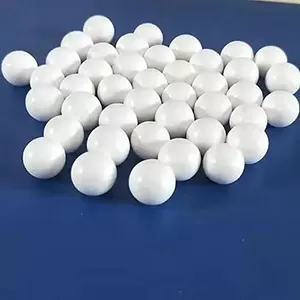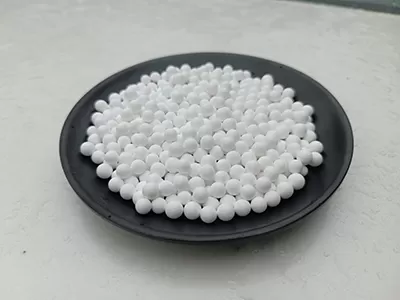Among various ceramic balls, silicon carbide ceramic balls typically exhibit the highest hardness, followed by alumina, silicon nitride, and zirconia ceramic balls, with hardness levels influenced by material composition, purity, and sintering processes. Hardness, often measured using the Mohs scale or Vickers hardness test, is a key property determining their suitability for abrasive or high-wear applications.

Silicon carbide ceramic balls stand out with the highest hardness, reaching a Mohs hardness of 9.5, second only to diamond. Their Vickers hardness ranges from 2800 to 3500 HV (Vickers Pyramid Number), attributed to the strong covalent bonds in silicon carbide (SiC) crystals. This extreme hardness makes them ideal for grinding hard materials like quartz, ceramics, and certain metals, as they resist wear even under intense friction. They are also used as packing in high-abrasion industrial columns, where their hardness ensures long-term structural integrity.
Alumina ceramic balls have high hardness that increases with purity. 95% alumina balls have a Mohs hardness of 9 and a Vickers hardness of 1800 to 2200 HV, while 99% alumina balls can reach up to 2400 HV. The high aluminum oxide (Al₂O₃) content, with strong ionic bonds, contributes to their hardness. They are widely used in grinding and polishing applications, balancing hardness with cost-effectiveness, making them a popular choice for general industrial use where extreme hardness is not the sole requirement.

Silicon nitride ceramic balls offer a Mohs hardness of 8.5 to 9 and a Vickers hardness of 1400 to 1800 HV. While their hardness is lower than silicon carbide and high-purity alumina, they compensate with superior toughness and thermal shock resistance. This makes them suitable for high-speed machinery and high-temperature environments where hardness needs to be paired with durability under stress, such as in aerospace bearings.
Zirconia ceramic balls have a Mohs hardness of 8 to 8.5 and a Vickers hardness of 1200 to 1600 HV, the lowest among these types. Their hardness is balanced by exceptional toughness and impact resistance, derived from zirconium dioxide (ZrO₂) with stabilizers like yttria. They are preferred in applications where hardness must be combined with resistance to cracking, such as medical devices and precision bearings subject to frequent impact.
Purity and sintering processes significantly affect hardness. Higher purity in alumina and silicon carbide balls reduces impurities that weaken the structure, enhancing hardness. Sintering at higher temperatures promotes denser crystal formation, increasing hardness by reducing porosity. For example, fully sintered silicon carbide balls have higher hardness than those with lower sintering densities.
In summary, silicon carbide ceramic balls are the hardest, followed by high-purity alumina, silicon nitride, and zirconia ceramic balls. The choice of ceramic ball depends on balancing hardness with other properties like toughness and thermal resistance, ensuring suitability for specific industrial applications.



